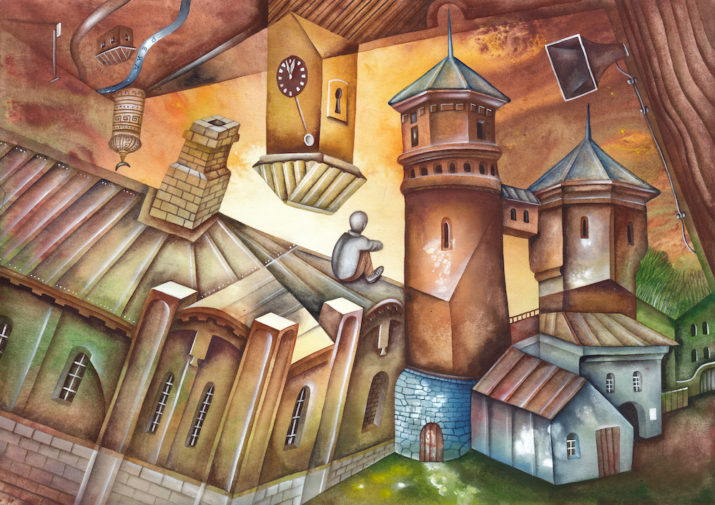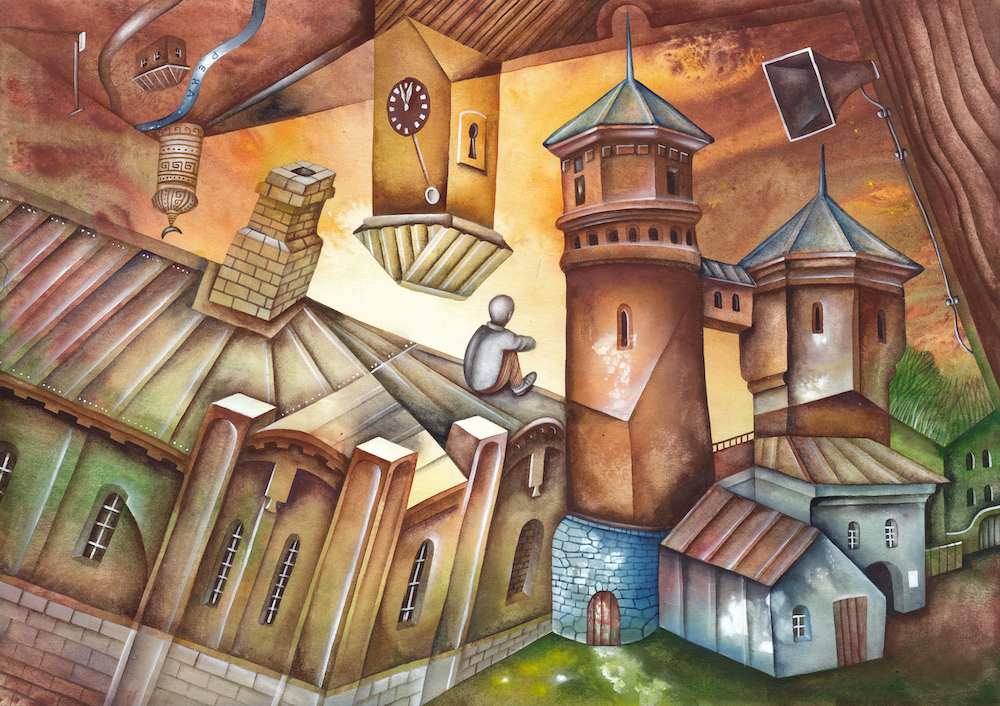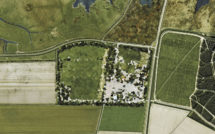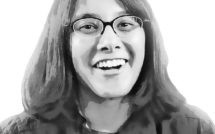

An Introduction to our special feature, Imagining, Thinking, and Teaching Europe.
In this special feature, EuropeNow questions Europe as an object of study and teaching subject, to examine different approaches that Europeanists have devised to do research on and in Europe, and to interrogate the notion of criticality in imagining Europe and Europeanness. What does it entail to study Europe, and which Europe(s) is(are) being constructed through “European studies?” What are some of the epistemological “turns” taken in the discipline over time (or not)? What does it mean to study Europe “critically” and what are some challenges encountered in doing so? What are some of the pedagogies that educators have adopted to teach Europe in higher education in the United States (and Canada) and in Europe? These are the questions leading this summer issue on “Imagining, Thinking, and Teaching Europe,” which gathers a wide spectrum of interdisciplinary scholarship where all Europeanists have a place, whether they consider themselves European studies scholars, integration studies scholars, or European Union studies scholars. We purposely opt for a blurring of the boundaries to focus on what Europeanists have in common, rather than dwelling on awkward and wasteful dividing lines.
Apprehending Europe in European studies
European studies can be envisaged as part of the “area studies” kin group. As such, Rafael de Miguel González concentrates on Europe as a geographical object before anything else. In backing a geographical approach to Europe, he recaps the role geographers have had in shaping ideas and representations of Europe, especially since the nineteenth century. He explains how the science of “where” brings key spatial knowledge to the study of Europe through various European and international level programs and professional organizations. In the twenty-first century, this knowledge has been revolutionized by new spatial technologies providing analytical tools to unveil and understand even the invisible on the Earth’s surface. Drawing on the tools of this “neogeography,” artist Mishka Henner uses landscape photography and the internet in his exhibit Dutch Landscapes to portray a Europe from above, diverting Google satellite imagery to think about geopolitically driven government censorship via aesthetic polygonic manipulation, as well as the intervention on the natural world that puts humans at the center of the world.
Looking at European representations historically, Esther Liberman Cuenca, in her reflection on the role of medieval history in explicating and teaching contemporary Europe, emphasizes the political recuperation of medieval symbolisms, in particular through the use of Joan of Arc and William Wallace in cinema to foster ethnonationalisms and identity nostalgia rooted in imaginary pasts. Film is also the path chosen by cinema scholar Neil Archer to speak about the nation as he shows the inadequacies of a “national cinema” concept in the context of Europe. He argues that, in spite of Brexit, it is important for the European project that British cinema be and remain European cinema, since “continental” European cinema has built its identity and production channels in ways that are tangled in two-way cultural dialogues. Hence, political disintegration in Europe needs not lead to a cultural parceling or constricting of media production. Kristin Dickinson corroborates this idea in her review of Fatih Akın’s Cinema and the New Sound of Europe, in which she concludes that analyzing German-Turkish cinemas leads “viewers to reconsider the geographic and linguistic borders of ‘Europe’ beyond the political borders of the EU.” Dual identity is also the vantage point from which artist Sol Calero produces her visual exhibit El Autobús, using her creativity as a migrant to Europe from Venezuela at the service of an examination of how the cultural Other arises, is exoticized, and often marginalized in the European project. The question of political integration and disintegration is, of course, at the heart of many Europeanists’ work. While decades were spent trying to understand and push forth integration―once seen as a “self-reinforcing inevitability” and now considered an elusive tarnished “talisman”―Europeans must grapple today with a difficult undoing that, not that long ago, seemed unfathomable to most. Political scientist Mark Vail introduces a roundtable on European integration in which four scholars expose different facets of the failures and discrepancies in EU membership accession, the conceptualization of sovereignty, and the implementation of common policies.
Criticality in European studies
Further addressing integration, Vanessa Bilancetti points to the challenges met by European studies in facing the series of socio-political and economic crises brought about by the financial collapse of 2008. Suggesting that European studies have shaped integration through the questions it has asked and how it has asked them, she bolsters the necessity for a “critical” European studies approach that combines Foucault’s governmentality tenets with neo-Gramscian analyses to reformulate the interrogations that steer European studies. This would allow for the field to better insert power, hegemony, and rationality in an examination of institutions and integration goals and processes―asking, not only the what, but the why and the how. Whenever speaking about criticality, it is useful to sort out what is meant and what critical scholarship encompasses. In their interview, Daniel Cohen, Alice Huff, and Nicole Nguyen delve into the responsibilities they see critical scholars having and why it is particularly crucial that a critical lens be adopted when scrutinizing education systems, since schooling, whether in primary or higher education contexts, represent a nexus where communities join in their struggles against top-down power structures, injustices, institutional violence, marginalization, and even criminalization. In designing her critical European studies project, Stefanie Boulila proposes a time-space exploration of “post-imaginaries” (post-feminism, post-racialism and post-homophobia), which constitutes “liberal resistance strategies against transformative social change” that normalize or deny historical hegemonic pressures in Europe and thus “displace genealogies of inequalities and conditions of oppression.” Reminding us that the EU has been grounded in societal issues and not only economic matters, Louie Dean Valencia-García critically examines issues of citizenship and scholarship in European collaboration during the 1980s-1990s to address the HIV/AIDS crisis and reveals how queerness and otherness participated in the imagining of Europe. In European studies, the cry for an injection of criticality has been motivated not only by the failures of the European project to account for issues of asymmetrical power relations, but also a certain slowness at adapting to a changing Europe.
Adapting European studies to a changing Europe
Anthropologist John Bowen explains how changing demography in Europe requires that European studies expands its realm of inquiry to take into account European Islam that has come to challenge national self-representations and is often studied through a negative trope for the “problems” it brings to Europe. Intermingling European studies with Islamic studies requires a more positive study of Islamic institutions in Europe, making clear that understanding Europe’s Muslims is to better understand Europe as a whole. Cross-pollinating with religious studies in general as a lens for the study of Europe is further underscored in the book review roundtable on Catholicism in Europe in which three recent books examine different facets of the role of Catholics in Europe since the Counter-Reformation, casting light onto various geographies of Catholicism and layered intra-religion identities.
This plea for a more integrated approach of European studies with other “studies,” such as Islamic studies, or religious studies more generally, is echoed in Hélène Ducros’ retrospective analysis about the content at the annual CES conference. She suggests three potential paths to expand Europeanists’ range of vision to include education studies, environmental studies, and rural studies, as these have been greatly underrepresented in the field and the Europe as elaborated through the organization through the last decade. Anthropologist Jeremy MacClancy’s case study in Spain supports Ducros’ encouragement to be attentive to the rural in European Studies. In much of Western Europe, rural areas have been emptying, so that La España vacia resonates with much writing on the end of the European village since the turn of the Millennium. European debates about the revival of the countryside, its economy, and possible reification and instrumentalization by nationalist ideologies must be part of Europeanists’ focus based on a better cultural understanding of the lived reality of these territories and a move away from urban-rural binaries.
How do we teach Europe (critically)?
EuropeNow, through its Campus section, has cultivated a mission of promoting the sharing of research and pedagogies that contribute to a richer engagement in the classroom as today’s Europeanists train the next generations to tackle the future of Europe. Campus was created to foster collegiality, not only in research, but in teaching―also highlighting how both constantly interconnect, as well as to recognize that one way that research moves the field forward is in being an essential component of classroom practices, whether students are consuming or increasingly producing it themselves. Campus champions those educators who are eager to take risks with novel and creative pedagogies to make Europe exciting and compelling to their students. It is especially imperative in this issue to command educators after a “COVID-19 semester” in which they have had to reinvent themselves and their courses on a dime, taking their instruction online, with, on one hand, all the difficulties and frustration for them and their students, and on the other, the possibilities that were open and new kinds of teacher-learner relationships that emerged.
Our campus spotlight on Europa-Universität Viadrina (the “Viadrina”) accents how European studies is viewed and taught from a European perspective. Positioned at a historic East-West border within Europe, the Viadrina presents a noteworthy example of how interinstitutional partnerships across Europe enhance education and research in critical European studies and how, through joint programs and regular exchanges with other European universities, faculty and students stand as ambassadors for a European studies that is collaborative, inclusive, dynamic, and ever more interdisciplinary. Different voices from the Viadrina explain how together they have created and sustained this multi-partite intellectual engagement as they share with EuropeNow various methodologies from the European campus, for example through syllabi about Europe as a concept and about the history of Europe as imperial, colonial, and transnational.
If Europe is changing, so is the way it is taught. Geographer John Pickles joins other educators in this issue to share two rich syllabi that he has used over the course of fifteen years for his “Transnationalism, Globalisms, and Geographies of Pan-Europe.” He comments on how much relevance he found in his 2006 syllabus and what dimensions had to be added in his 2020 syllabi to fully address the contemporary period (such as environmental topics). Other pieces highlight the European-American connections in European studies education. One recent graduate of the inaugural dual-degree program between Trinity College Dublin and Columbia University describes her experience and reminds us who is at the center of our pedagogical ventures. Making the trip over the Atlantic in the other direction, Richard Golsan reminisces about his experience as an American teaching French history in France to the French, in particular the sensitive and still raw topics of WWII. Focusing on American teachers in training in Spain, EuropeNow’s interview with the Spanish Ministry of Education about its language and cultural program for foreigners also includes insights from past program participants. America not being limited to the United States, Canadians have also been motivated actors in the field of European studies, although as Conny Burian explains, this is not a term that is often used there where “Europe” is incorporated in language and culture programs. In her article, she describes her place-based experiential pedagogical approach to teach European exchange students from Germany and Austria and German language students about the environment and the non-human in the context of colonial history.
Among other innovative pedagogical approaches to teaching Europe featured here, historian Nicholas Ostrum explains how he ventured into experimental avant-garde Eastern European literature to craft a lesson about disjointed memory with Georgi Gospodinov’s The Story Smuggler as a starting point. Sharing instructional challenges and successes, Ostrum gives a voice to one of his particularly astute students who connected Bulgarians’ experiences with those of Romanians under Ceaușescu. We include Kevin Michot’s paper as a student contribution to demonstrate the pedagogical outcome. In his history course―for which the syllabus is provided―Louie Dean Valencia-García led his students to analyze an array of Western civilization textbooks to notice what or who they omitted, prompting them into a critical examination of historical narratives. The course outcome, a joint paper on “The Myths of Western Civilization: Decolonizing and Queering European History” discusses how some textbooks have occulted violence against women, the inhumanity of slave labor, or provided an uneven treatment of decolonization, among other topics.
While certainly not exhaustive, this feature aims to display only a sliver of the wide diversity of approaches to Europe in European studies, the many “Europes” that are studied and taught, and the fruitful collaborative endeavors that are central to the success and sustainability of the (inter)discipline―beyond EU studies and integration theories, but inclusive of them. From the cultural and spatial turns, to the relational turn that situates Europe vis-à-vis its outsides in complex ways entrenched in postcolonial legacies, European studies has successfully evolved into a transnational interdiscipline, albeit admittedly not without some imperfections. The study of Europe constitutes an exercise in constant zooming and dezooming, scale hopping, time travel, and border crossing (physical and intellectual) not only with regard to Europe as object of study, but to European studies itself, in a continuous process of self-examination and self-actualization. Let Europeanists look to the future and seize the opportunities that lie ahead to (re)fashion the field so it continues to partake in essential debates with which European societies are and will be confronted.
Hélène B. Ducros is Jean Monnet Chair of Research and Pedagogy at EuropeNow. Her work in human geography focuses on place-making, landscape perception, heritage preservation, and material culture, and has been published in Norois, The Journal of Sustainable Tourism, Island Studies Journal, Rural Tourism: An International Perspective (Cambridge Scholars, 2014), The Routledge International Handbook of Walking (2017), Explorations in Place Attachment (Routledge, 2018), and The Routledge Handbook on Place (2020).
Louie Dean Valencia-García is Assistant Professor of Digital History at Texas State University. He has served as a Lecturer on History and Literature at Harvard University. He serves on the research editorial committee for EuropeNow. He is the author of Antiauthoritarian Youth Culture in Francoist Spain: Clashing with Fascism (Bloomsbury, 2018) and the editor of Far-Right Revisionism and the End of History: Alt/Histories (Routledge, 2020).
Research
– “Placing Islam in European Studies” by John Bowen
– “An Empty Spain Filled with Ideas?” by Jeremy MacClancy
– “Europe in a Global Context: Geographical Perspectives” by Rafael de Miguel González
– “From Past Practices to Future Directions in European Studies” by Hélène B. Ducros
– “Between Foucault and Gramsci: A Critical Analysis of European Integration” by Vanessa Bilancetti
Commentary: A Roundtable on European Integration
– “Possible Scenarios for European (Dis)Integration Future” by Angélica Saraiva Szucko
– “The Lasting Impact of the Breakup of Yugoslavia” by Nikolina Zenovic
– “Illusory Enlargement of the European Union” by Milos Rastovic
Visual Art
– “Dutch Landscapes,” a series by Mishka Henner
– “El Autobús,” a series by Sol Calero
Interviews
Book Review Roundtable: Studying Europe Through the Lens of European Catholicism
– Introduction by Hélène Ducros
– Catholic Missionaries in Early Modern Asia Patterns of Localization, reviewed by Michel Chambon
– Catholics and Communists in Twentieth-Century Italy, reviewed by Natalia Núñez-Bargueño
Campus Spotlight: Europa-Universität Viadrina
– Introduction by Hélène Ducros
Campus
– “From French Studies to World War II and Beyond: A Reminiscence” by Richard Golsan
– “Language and Culture Across Borders and in the Classroom: A Conversation with Olimpia Muñoz-López, Victoria Hernández Pando, Ana Griñon, Niamh Kelly, and Jakob Romine” by Louie Dean Valencia García
– “From Dublin to New York: The Globalization of European Studies” by Sara McGeough
– “Dreams of Cake, Gold, and Freedom in Postwar Romania” by Kevin Michot
– “Europe Today: Transnationalism, Globalisms, and Geographies of Pan-Europe (I)” by John Pickles
– “Europe Today: Transnationalism, Globalisms, and Geographies of Pan-Europe (II)” by John Pickles
Photo: Watercolor illustration of the City Quarter | Shutterstock
Published on June 3, 2020.




